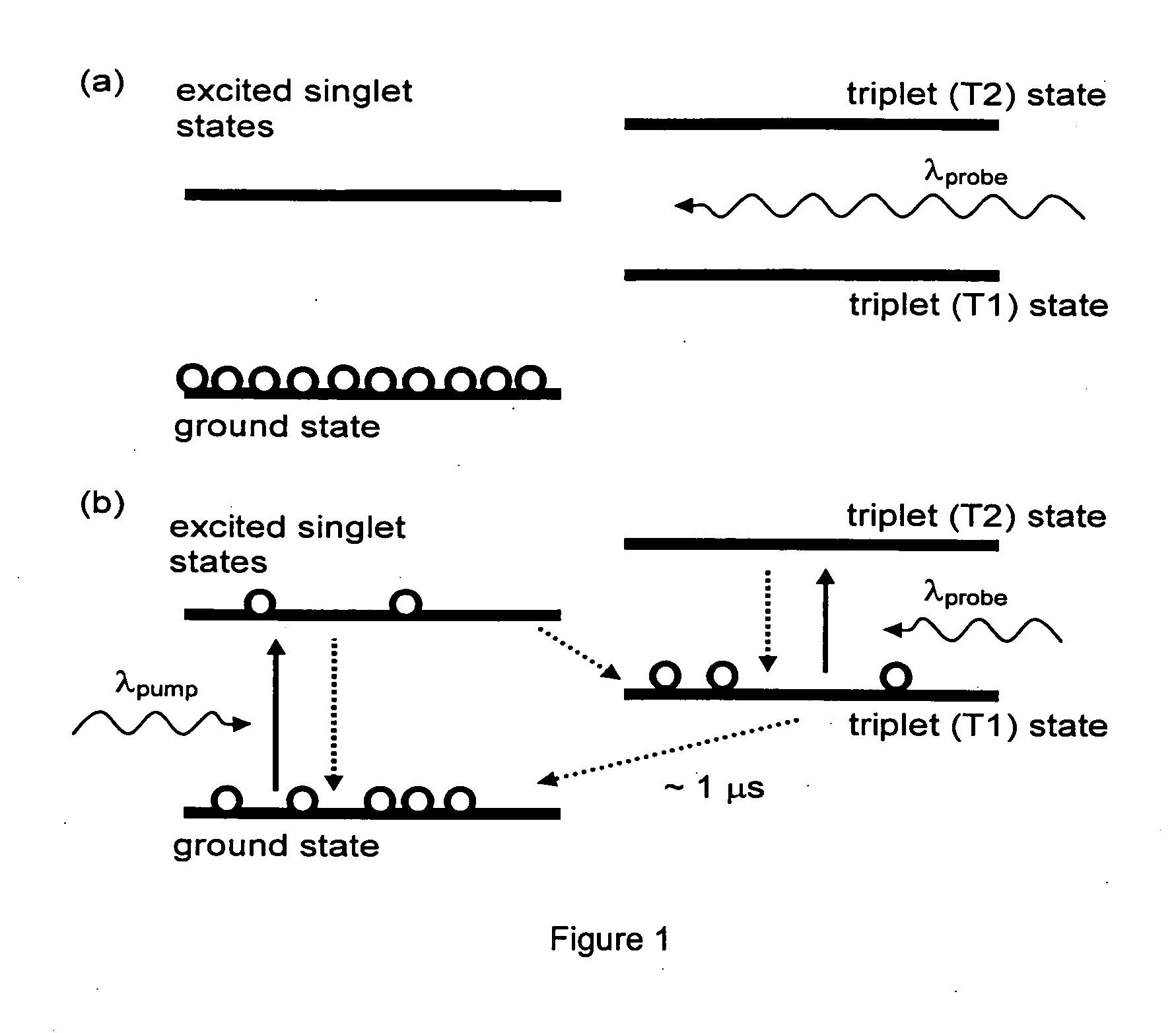Method for optical coherence tomography imaging with molecular contrast
- Summary
- Abstract
- Description
- Claims
- Application Information
AI Technical Summary
Problems solved by technology
Method used
Image
Examples
Embodiment Construction
A. Technical Overview
OCT imaging technology has not yet taken advantage of molecular contrast mechanisms which have revolutionized other medical and biological imaging modalities such as MRI, PET, and SPECT. In particular, other optical techniques such as fluorescence, confocal, and multiphoton microscopy have had tremendous impact because of their capability to image highly specific molecular targets, including antibody-conjugated fluorescent probes and genetically expressible probes such as green fluorescent protein. Unfortunately, OCT is intrinsically insensitive to incoherent scattering processes such as fluorescence or spontaneous Raman scattering, because it depends upon coherent detection of scattered light.
We have previously proposed a general concept for the use of spectroscopic OCT for detection of light from coherent inelastic scattering processes such as stimulated emission, stimulated Raman scattering, and other four-wave mixing processes (J. A. Izatt, M. D. Kulkarni...
PUM
 Login to View More
Login to View More Abstract
Description
Claims
Application Information
 Login to View More
Login to View More - R&D
- Intellectual Property
- Life Sciences
- Materials
- Tech Scout
- Unparalleled Data Quality
- Higher Quality Content
- 60% Fewer Hallucinations
Browse by: Latest US Patents, China's latest patents, Technical Efficacy Thesaurus, Application Domain, Technology Topic, Popular Technical Reports.
© 2025 PatSnap. All rights reserved.Legal|Privacy policy|Modern Slavery Act Transparency Statement|Sitemap|About US| Contact US: help@patsnap.com



